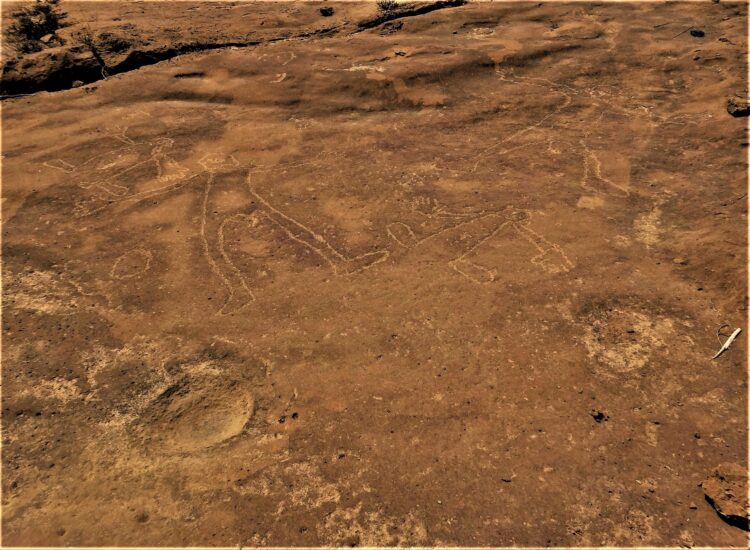
Anthropomorphic figures are the most interesting and impressive in the rock art of Gidran Waro Gharoto. These mostly include giant human figures at this rock-art site.
Zulfiqar Ali Kalhoro
I have discovered many rock art sites during my frequent trips to Gadap in the Malir district in the Karachi division. Gadap is home to many rock art sites which showcase the ancient history of the Karachi region. Amongst various rock art sites, the Gidran Waro Gharoto site is the most important and third-largest after Lahut Tar and Thado Dam rock art sites respectively. The Gidran Waro Gharoto is a hill stream which is located about 10 km east of Gadap town and 2 km southeast of the Thado Dam rock-art site. The main motifs in the rock art of Gidran Waro Gharoto include cupules, anthropomorphic figures, geometric figures, buildings, shoes, hands, and footprints.
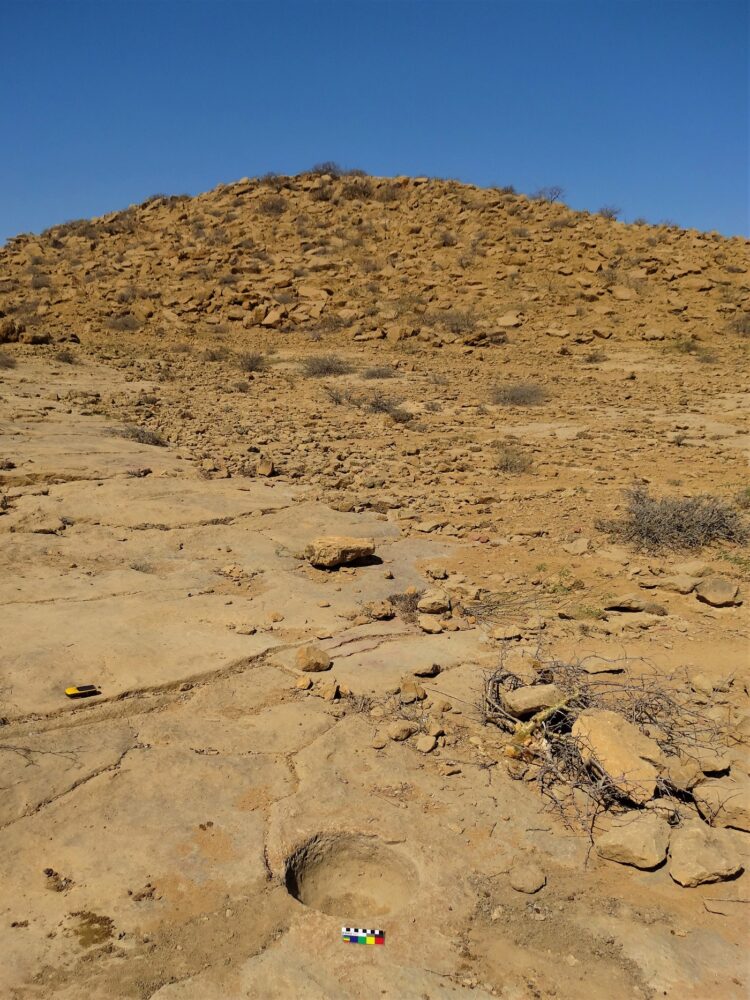
Cup-marks or cupules are found almost in every valley in the Khirthar mountain range in Dadu and Kamber-Shahdadkot districts on which I have already written papers in the research journals and articles in newspapers. There are six cup-marks at the Gidran Waro Gharoto rock art site which are made along with other petroglyphs. One cup-mark is near the anthropomorphic figures of what are probably shamans – which possibly show that it might have been used for performing certain rituals by the community in the ancient Karachi region.
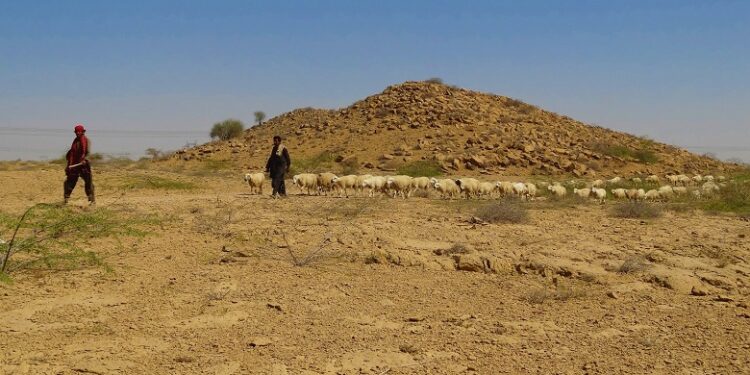
Anthropomorphic figures are the most interesting and impressive in the rock art of Gidran Waro Gharoto. These mostly include giant human figures at this rock-art site. Giant human figures are found in the world rock art. They are also found in the rock art of Pakistan. A few giant human figures in the rock art of Northern Pakistan have already been reported. These giant human figures have been found in the valleys of Oshibat, Dadam Das I, Thalpan V, Chilas, and Gichi Nala in the Diamer district in Gilgit-Baltistan by the German archaeologists and Pakistani anthropologists. They believe that these images belong to the Bronze Age and compared them with the images found in the Oknuve culture of Serbia. I have discovered similar giant images in Gadap tehsil of Malir district in Karachi division. They possibly represented the shamans.
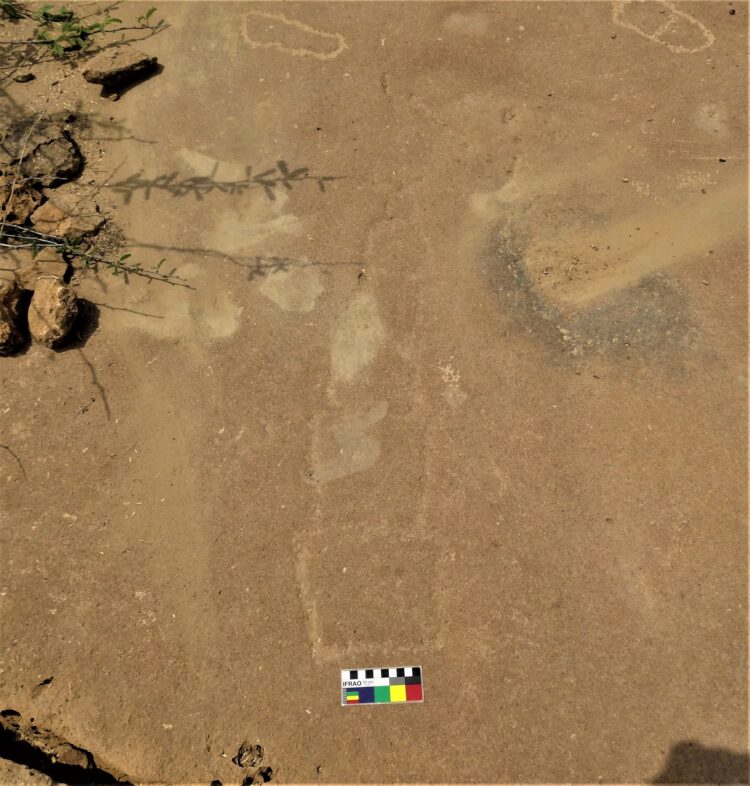
The Gidran Waro Gharoto is a small hill stream. On both banks of the stream are to be found rock carvings. There are eight giant human figures on both banks of the hill stream. On the left is only one rock art panel whereas on the right are seven panels where one finds both petroglyphs and cup marks. There are four giant images on the first panel. All figures seem to be in movement, perhaps depicting a community ritual. All the figures are shown with extended arms and outstretched legs. Before these images is a cup mark which was perhaps used for performing a ritual. It might have been used for collecting rainwater to distribute it among the participants of the ritual performance. If one looks at the direction of the cup mark, one thing becomes clear: it was connected to the giant human images. The cup-mark is positioned towards the legs of the figures.
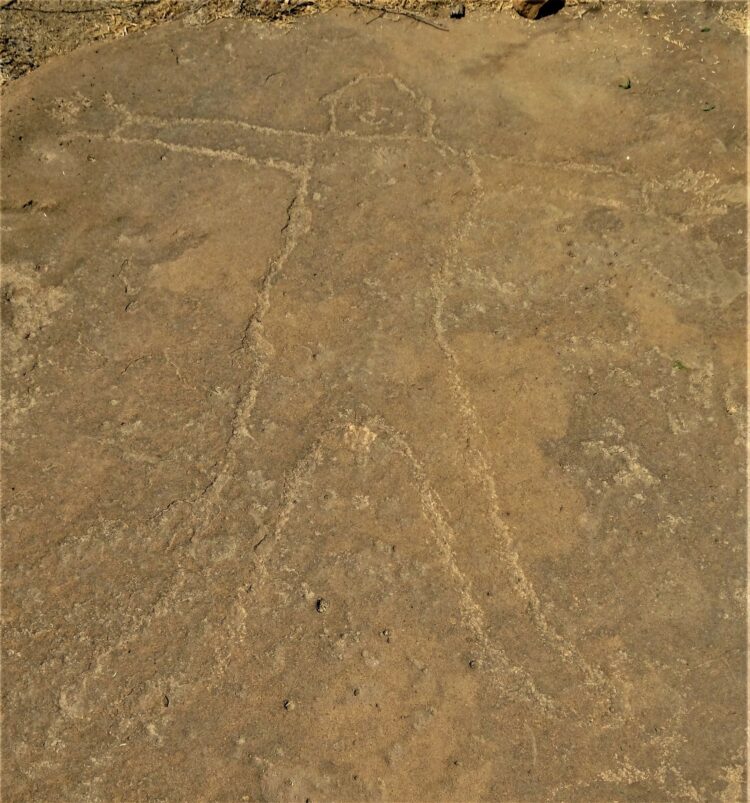
To the north of this panel, there is another panel with a single giant figure. This figure is also shown with extended arms and outstretched legs. Like the figures on panel 1, this image is also oriented to the east. Images on both panels appear ancient. Three other panels are located northwest of panels 1 and 2. On panel number 3 are two engravings that appear to be the handiwork of shepherds who tried to imitate the similar nearby images. Of these, one is a giant human image and another is a smaller one. Panels number 4 and 5 also depict larger and smaller human images. All these images look modern and my interviews with the local community also revealed the names of the artists who copied the images on panels 4 and 5 from panels 1 and 2 – which were made in the Bronze Age.
To the south of these images is a single giant human engraving that was retouched by shepherds. This image is surrounded by other petroglyphs, mainly geometric designs and footprints.
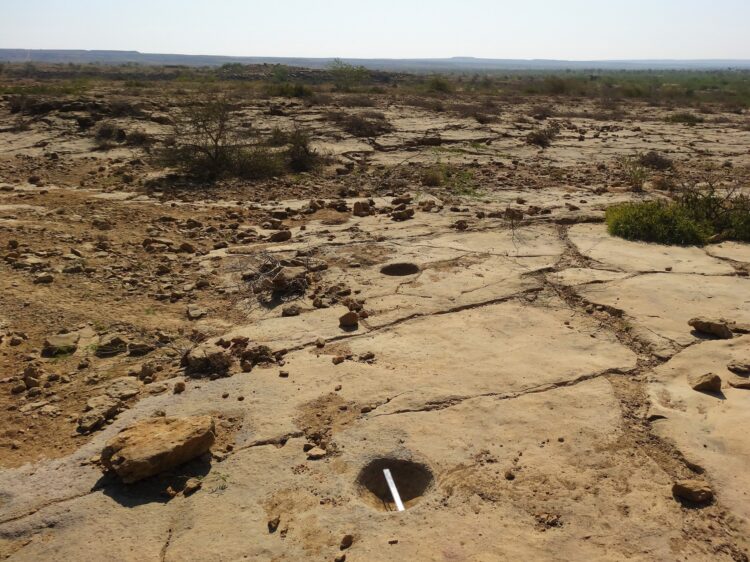
Like other rock-art sites of Lahut Tar and Thado Dam rock art site, the Gidran Waro Gharoto rock art site also contains some mostly ancient footprint petroglyphs. At other rock art sites in Gadap, one can find both modern as well as ancient footprints. Apart from footprints, the recurrent theme in the rock art of Gadap is the shoeprint motif which is found almost in every major and minor rock-art site. A variety of shoeprints have been engraved by the local people of the nearby villages. A few of them have also been made by shepherds from other villages who brought their herd for grazing near the Gidran Waro Gharoto rock art site.
Along with footprints and shoeprints, handprint petroglyphs are also found in this rock art. There are 13 engravings of handprints at these rock art sites, out of which 8 are prehistoric and some belong to the historic period. Some have also been recently made by shepherds and travelers.
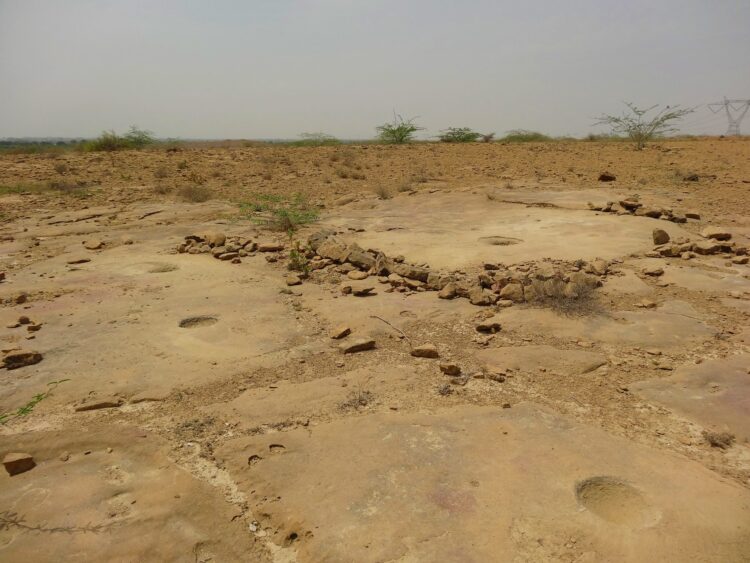
Geometric motifs are the most recurrent theme in the Gidran Waro Gharoto rock art site. Many representations of rectangles and squares appear in the rock art of the Gidran Waro Gharoto, engraved near the carvings of some buildings which are probably religious structures. There are several depictions of buildings in the rock art of the Gidran Waro Gharoto. These buildings appear probably to be associated with the Zoroastrian community as some of the anthropomorphic figures are shown holding some ritual objects – probably a fire altar near these buildings. Some geometric signs near these buildings also confirm the fact that they are possibly buildings of the Zoroastrian community that once dominated the Sindh-Kohistan area when Achaemenids and Sasanians ruled in Sindh. Some engravings of structures also seem to be stupas. Stupa images are found in large numbers at Lahut Tar and Thado dam rock art sites. There are only Buddhist stupa images found at the Gidran Waro Gharoto rock art site.
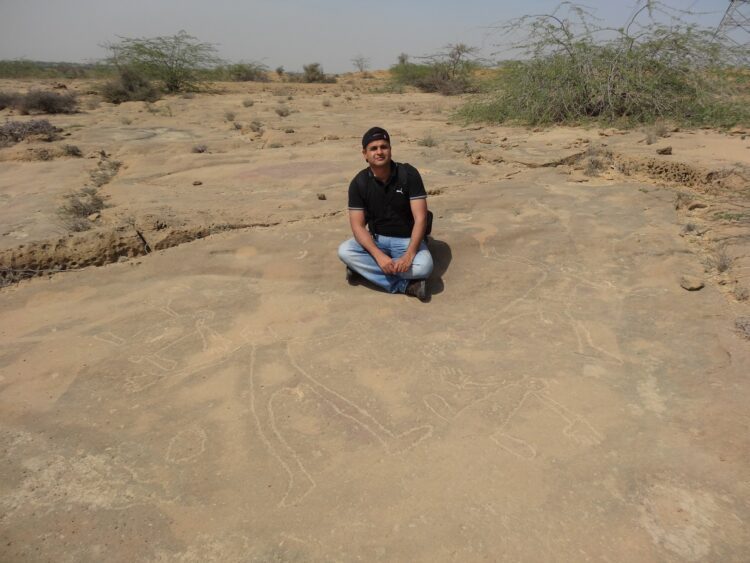
Located about 9 km east of Gadap town is the Melo Buthi. There are some cupules, an ancient graveyard and a stone row at this site. There are 8 cupules at this site which, according to local people, were used for preparing explosive material (locally called Gandraf) during the Talpur period (1783-1843). So, it is still afresh in the memory of the local community that these mortars were used for preparing explosive material. According to the local community, their ancestors made the mortars. This Melo Buthi is surrounded by the villages of the Gondar tribe. The villages of the Gondar tribe near the Melo site are Mir Khan, which lies east of the Melo Buthi, Rabu Gondar in the south, and Imam Bakhsh west of the Melo Buthi site. This is a major rock art site in terms of cup marks and megaliths in the Gadap area. Apart from cup marks, Melo Buthi is also known for megalithic structures: the most prominent is a stone alignment.
Megaliths have also been reported from other parts of Pakistan. I have discovered some megalithic sites in Gadap Thano Bula Khan and other parts of Sindh. In Sindh, different types of megaliths including, menhirs, stone circles, stone rows, dolmens, and stone circular structures have been found. There are 11 stones in Melo stone row. Six stones are standing while the rest have fallen to the ground.
______________________
Zulfiqar Ali Kalhoro is an anthropologist and author of 12 books including ‘Symbols in Stone: The Rock Art of Sindh’, ‘Perspectives on the art and architecture of Sindh’, ‘Memorial Stones: Tharparkar’ and ‘Archaeology, Religion and Art in Sindh’. He may be contacted at: zulfi04@hotmail.com
Courtesy: The Friday Times Lahore